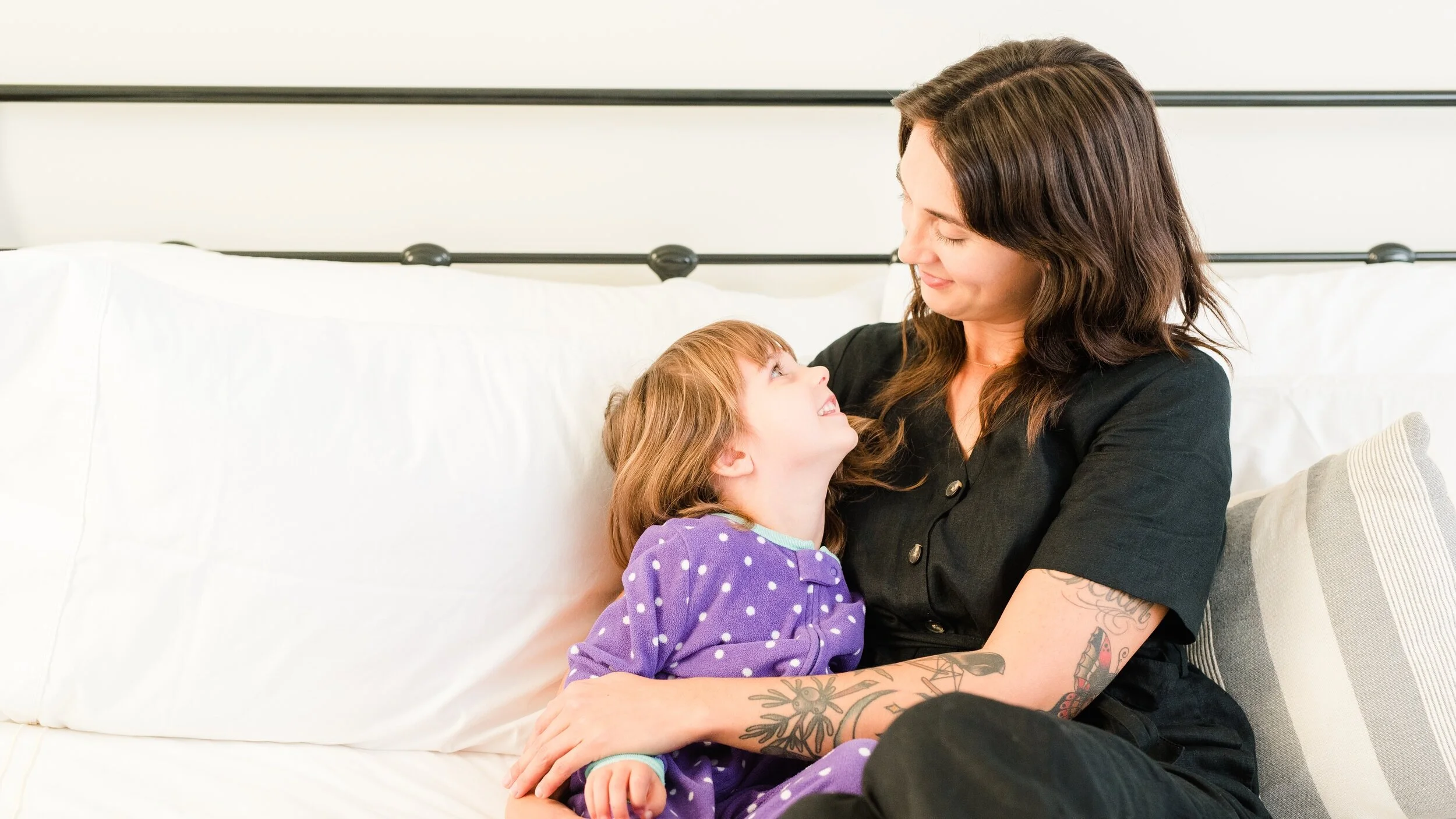If you’ve ever asked yourself this question, you’re not alone! We want our kids to sleep well, but we want to get there in the easiest way with the fewest tears, right? But there’s more to the decision than that.
I always say that there is no “one right method” or “one best method” for sleep training, because it completely depends on each individual child and family. One of the biggest factors to consider when choosing a sleep training method is how involved YOU want to be in the process.
Sleep training methods fall on a spectrum that ranges from constant parental involvement to zero parental involvement, and there are legitimate reasons to use one method over another for your particular family. Let’s take a look at the various methods to give you insight that will help you make your decision!
Chair Method
On the far left of the spectrum, we’ve got one of the most involved methods. The Chair Method allows you to stay in the room with your child the whole time that they are falling asleep. Some sleep consultants might include touching and consoling with this method, but I personally do not, since I find that it reinforces many of the behaviors we’re trying to change.
Since you are in the room the whole time, many parents feel more settled about using this method, and kids feed off that energy. Additionally, some kids (especially toddlers and preschoolers) feel more willing to attempt falling asleep on their own if they still have the reassurance of mom or dad nearby. Finally, kids who were used to constant parental presence tend to benefit from using this method, as it is a way to gradually wean off the parental presence so that the child can begin learning to fall asleep on their own. This method is a great fit for many families!
However, this method is still not for everyone! While you do stay in the room while sleep training, there are no guarantees of no crying or less crying! So if your child fights the process hard, you may find it difficult to be up close and personal with all the noise and emotion. You may worry, feel guilty, or feel anxious, and your child may feed off those emotions — so the child cries, we feel negative emotions, and then child picks up on that energy, which leads to even more of an emotional roller coaster.
Scripted Checks
In the middle of the spectrum, we’ve got Scripted Checks. This method gives Baby more time and space to practice independent sleep (since the parent is not constantly in the room), but Baby still gets the reassurance that mom and dad are nearby since one parent will pop their head in every few minutes.
This method does a pretty good job of balancing parental involvement and independent sleep practice, which is why many families choose this method.
However, some babies truly do better learning sleep skills with less parental involvement because there’s less stimulation, and other babies do better with more parental involvement because they feel more safe and secure. This is why you always have to be willing to change course to something that may work better for your particular family.
Extinction
On the right side of the spectrum, we’ve got extinction. Extinction is commonly referred to as cry-it-out, but it’s not the horrible, awful thing that many people make it out to be. No parent chooses extinction because they want to torture their baby — they choose extinction because some babies truly learn sleep skills more quickly if they’re just given some time and space to figure it out, without mom and dad coming in all the time.
Extinction can help some children learn to sleep more quickly with fewer overall tears because there is less confusion over whether or not mom or dad will be coming in anytime soon. When a child can focus on learning to sleep rather than looking for mom or dad, they can lean into their own capacity to learn sleep skills.
On the other hand, some parents are not at all comfortable with a method that doesn’t allow them in the room, and that’s completely fine! The other more involved options for you are listed above. Additionally, some babies certainly do better with more parental involvement because they feel more relaxed and secure, in which case extinction is not the way to go!
Whatever method you choose, know that you CAN have success in helping your child learn to sleep well. Whatever method fits your parenting philosophy, whatever method fits your child’s preferences — each method can work when executed properly. If you need help selecting and/or implementing a method, I’d love to help you out! Find out more about how I can help your whole family get better sleep here.


